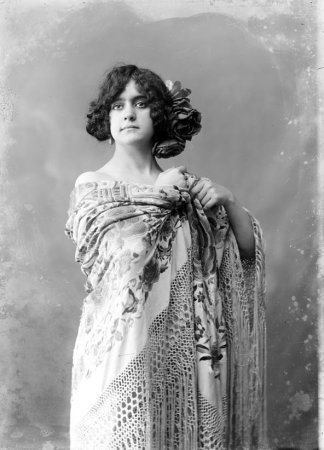
- Industry
The Women Behind the Camera in Spanish and Latin American Cinema: Elena Jordi
The history of cinema is marked by the rocky path that women had to hurdle to work in a profession beset, from its origins, by the infamous gender gap.
The inclusion of women in opportunities beyond their appearances on the big screen has been late and slow in every aspect of the movie industry.
Female filmmakers have long claimed their rightful place in cinema but their presence shouldn’t be news but still marks a milestone in a male-dominated industry. Although there is still a long way to go to achieve equality in cinema, it could be said that little by little, efforts are being done to reach quotas worthy of balance.
The fact that film festivals and academies around the world recognize the talent of women should not be an exception. It is a just and deserving matter. It is also a recognition of those who started paving the way and imagined that the dream factory had no limits a century ago.
We look back to meet some of those pioneers who carved out a niche for themselves in the beginnings of the Spanish and Latin American film industry, many of whom did not see their merit recognized and even fell into oblivion for decades. And, of course, we will keep track of those who came after.
To determine who was the first female film director in Spain and Latin America should not be difficult but the truth is, there is no single or definitive answer. When researchers and scholars studied the first decades of cinema history, they faced the problem that a good part of the film heritage had disappeared since cinema initially did not have the same consideration as other arts but rather, it was considered as simple amusement, associated more with popular celebrations than with cultural spheres.
But let’s put names and faces to those unique and true pioneers of our cinema.
We start with María de Montserrat Casals i Baqué, better known by the artistic pseudonym of Elena Jordi, a Catalan businesswoman and filmmaker, a bohemian artist from Barcelona at the beginning of the 20th century and probably the first film director in Spain.
Elena Jordi (born in Cercs, a municipality in the province of Barcelona in 1882) was ahead of her time. Jordi began her career as an actress at the Paralelo theaters, where she appeared with the great Margarita Xirgú.
Jordi’s performances in the vaudeville genre earned her rave reviews and highlighted her beauty and stage elegance. The actress represented “the new woman” of the 1920s who was beginning to gain a foothold in a society that was trying to be more open.
At the same time, Jordi was a woman with such great entrepreneurial skills that she came to acquire her own theater on Via Laietana -although she was unable to open it – and produce plays and even produce and direct the film Thais.
Between 1914 and 1918, Barcelona was a party, a vaudeville city where the Belle Époque lasted a few more years, thanks to Spain’s neutrality during World War I. While a fratricidal battle was being waged in Europe, the Catalan textile industry was in high demand. Large amounts of money moved through Barcelona, which helped finance one of the most important film industries in Europe at the time.
It was in 1916 when Jordi made the leap to the world of cinema. According to Josep Cunill, her biographer, she was encouraged by one of her actors from the Spanish theater, Domènec Ceret, who had been directing the production company Studio Films for a year.
Shortly after, all the actors in Jordi’s vaudeville troupe, including her and her sister Tina, were performing in Studio Films. Jordi’s first film role was in the film, La loca del monasterio (1916).
Jordi’s collaboration with Studio Films was not limited to acting. In 1918, the actress starred in, directed, and took over the production of the film Thais for Studio Films. It was a very free adaptation of the opera of the same name by Jules Massenet, based on a novel by Anatole France.
Although little is known about the history of this film, Cunill referred to the fact that the film was shot in 1917 at the Hispano Films Studios, and that there are journalistic notes from 1918 that speak of it, going so far as to affirm that it reflected the high level of the Spanish film industry at the time.
Unfortunately, no copies of Thais have been found. It’s difficult to determine the extent of distribution of this film because other adaptations of Massenet’s opera were apparently made in those years, all of them titled Thais as well.
In the same year, Jordi acquired land on Via Laietana where she built a theater that should have been called Teatro Elena Jordi but the project was cut short due to a lack of resources. A film distributor acquired the building and dedicated it to the seventh art, creating the Pathé Palace.
In the 1920s, Jordi continued to be successful in film and theater until 1929 when she went on stage for the last time, at the Teatro Goya in Madrid, retiring shortly after from public life and living the rest of her days in anonymity.
She was undoubtedly a remarkable woman who achieved endless achievements in a deeply machista society. She is said to have been a woman of character, with high self-esteem, strong, tenacious and relentless. At the same time, she had a great ability to connect with the audience. Elena Jordi died in Barcelona in 1945.
Translated by Mario Amaya.